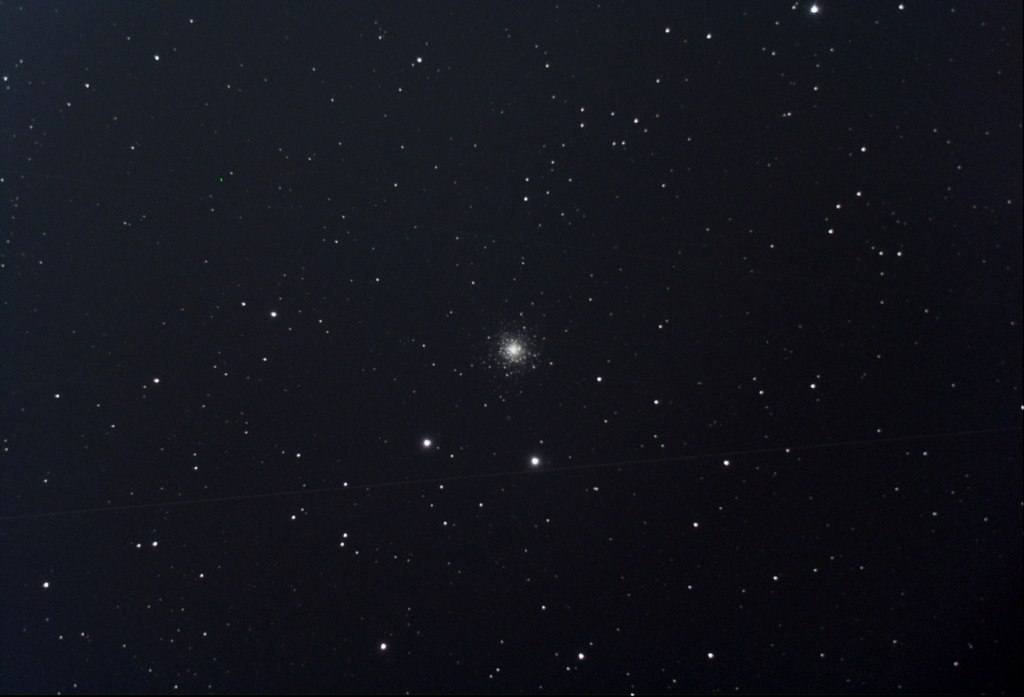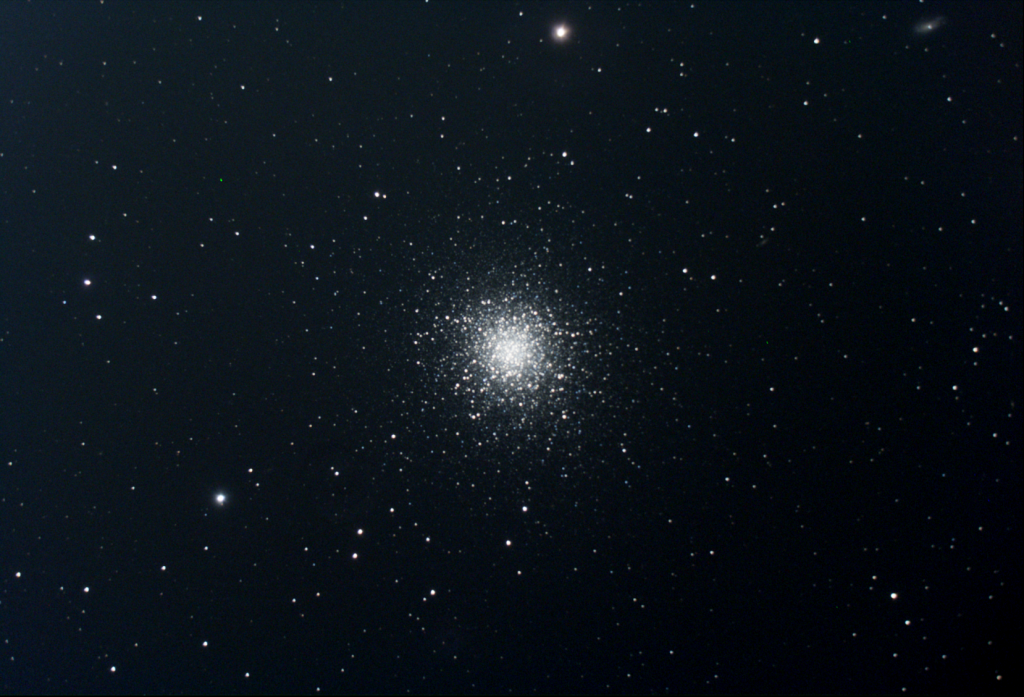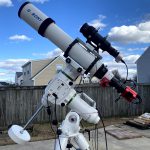
It finally stopped raining. The temperature was in the mid-70s and the sky was mostly clear. Of course the nearly full Moon rose just at dark. Even with the full Moon I wanted to take advantage of the clear sky to do a little bit of EAA observing. I decided to mostly focus on objects in the constellation Hercules capturing 3 globs and a planetary nebula before moving over to M101 to check on the supernova (SN2023ixf). For this EAA session I shot 60 second exposures capturing no more than 15 minutes of data for a single object.
I uncovered the scope in the later afternoon. I shot sets of 30 second and 60 second darks to use for the night. When it got a bit darker I shot two new sets of flats; one set with a target ADU of 10240, and one set with a target ADU of 25000. Both overcorrected a dustmote but I ended up using the ADU 25000.
After dark I spent a little time focusing using the Ekos Focus Module and the Bahtinov mask. Took a bit but I was able to get the best focus I have had since putting the C8 on the mount. The mask really helped. I did not polar align, I was hoping the mount had not moved since the last session.
Plate solving is calculating the focal length at 1221.4 mm of F/6.0, still a little off but it is what it is for this session. I’ll get it space right eventually.
The EAA images in this post were capture with my ZWO ASI294MC Pro cooled to -5 C through my Celestron C8 SCT with a f/6.3 Focal Reducer. For guiding I am using the Orion Starshooter Autoguider (OSSAG) camera attached to my SVBONY SV106 60mm guide scope. All gear is mounted on a Sky Watcher EQ6-R Pro. The mount and cameras are remotely controlled with KStars/Ekos through INDI Server running on a Libre Computer SBC. The images were live stacked using SharpCap Pro. Images have been cropped or resized to the region of interest for file size, but otherwise appear just as I observed them.
NGC 6229 a globular cluster located in the constellation Hercules. This is a live stack of 15 x 60 second exposures at 121 gain, 30 offset, and bin 2×2.

It was just getting dark and the Moon was up in the East, but I was still able to observe this nice Globular Cluster. The capture was buzzed by two satellites, one early on and one in the farm before the last. Still a nice globular.
Messier 13 (M13), the Great Globular Cluster in Hercules, in the constellation of Hercules. This is a live stack of 15 x 60 second exposures at 121 gain, 30 offset, and bin 2×2.

Wow! This popped from the first frame. I have observed and captured M13 many times, but this was… well… just WOW! My favorite of the night. The faint galaxy in the upper right corner is NGC 6207. Pretty happy with the focus and the vignetting from the focal reducer does not appear to be too bad.
Messier 92 (M92) a globular cluster in the constellation of Hercules. This is a live stack of 15 x 60 second exposures at 121 gain, 30 offset, and bin 2×2.

Another nice globular cluster. A bit smaller, in FOV, and appears to be more dense at the center than M13. Very nice view.
NGC 6210 a planetary nebula in the constellation of Hercules. This is a live stack of 15 x 60 second exposures at 121 gain, 30 offset, and bin 2×2.

Bright blue planetary nebula. Not a lot of detail but I can see some structure off to the left and right of center.
For some reason the flats are overcorrecting for a dustmote. You can see it just down left of center. It was not evident in the previous captures but showed up in NGC 6210 and M101 captures.
The last stop of the night was M101 to check on SN2023ixf. Messier 101 (M101), the Pinwheel Galaxy, a face-on spiral galaxy in the constellation of Ursa Major. M101 is part of the June 2023 Cloud Nights EAA Observing Challenge. This is a live stack of 15 x 60 second exposures at 121 gain, 30 offset, and bin 2×2.

Boom! These it is. 🙂 The supernova is still very bright, it was easily visible in the first exposure. My focus is definitely much better than the first time I captured the supernova just after its discovery. The supernova is the bright “star” in the spiral arm to the lower right of center in this capture.
Even though I did not do a polar alignment, the previous alignment must have held pretty good. No issues with slews and guiding with a RMS under 1. Great night when all the gear just works 🙂
I started to see a few thin clouds on the All Sky Camera so just after 11 PM I decided to pack up and covered the scope at around 11:15 PM. Was great to get a couple hours of observing in, even with the bright Moon. Looks like we might have another shot at some clear skies on Sunday, if so I might give a few more of the Cloudy Nights June 2023 EAA Monthly Observing Challenge objects a try.








